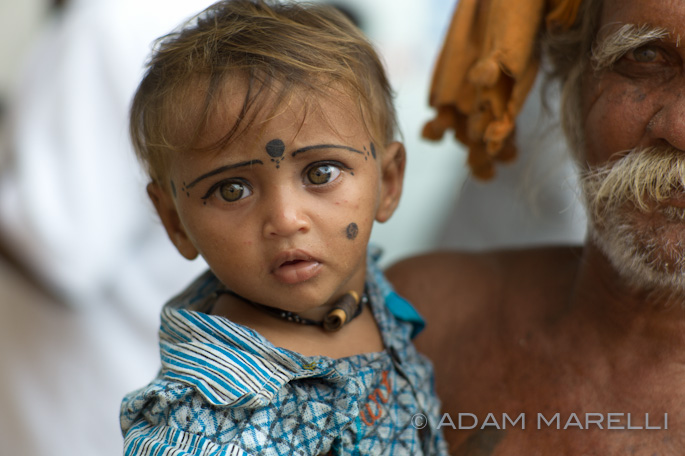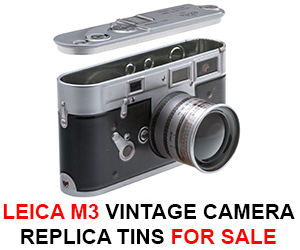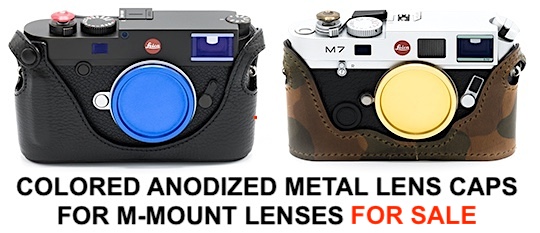Today’s guest post is from Adam Marelli (www.adammarelliphoto.com):
The release of the M8 did not convince me to go digital. While it was a big step forward, and some camera dealers swore a full frame M was not an option, I decided to hold out. The M9, and its custom Kodak CCD sensor, promised to deliver the same, if not better image quality than my film camera. There were a few things I was hoping would happen with the M9 and a few unexpected surprises.
While I am traveling, the less gear I have to carry, the better. The release of the M9, meant my bag was about to get a whole lot lighter. After using it for a few months and memorizing the new digital layout, I was ready to leave my M6 at home and give the M9 a real test in southern India. Carrying one camera and three lenses, I wondered if the M9 could out perform the M6.
The Findings:
1. No More Dead Weight. Usually I pack about 25-30 rolls of film for every week I am away. Because I trust airlines as much as I trust politicians, I almost never check luggage. The bag of film takes up a lot of space in a carry on. Instead I packed three memory cards, (2) 8GB and (1) 16GB into a small zipper pouch no bigger than my wallet.
2. Flexible ISO. Being able to change your ISO on digital camera has been an expected feature for years. But coming from film, the ability to switch from ISO 160 to ISO 800, made shots possible that would have required a tripod. Leica has built such a strong position with their film cameras, that anyone switching to digital will giggle to themselves as they switch their ISO’s. At least for the first few months.
3. Self Timer. Unless you are shooting annual reports, most architecture is best shot in the early morning or at dusk. The color saturation of long exposures makes twilight efforts worth while. The combination of the self timer and the shutter dial’s multiple second exposures, allowed me to leave the cable release and sometimes the tripod at home. One less thing to carry and fuss with in the dark.
4. End Of The Roll. When you are in a new place, action comes from all directions. The worst thing that can happen is you run out of film and miss the shot. Its happened to me before, even with careful planning. With the M9, I did not have to have to change rolls of film. I had hundreds of shots per card and could easily manage shooting without running into the 37th frame.
5. LCD Screen. Before I shot the M9, I used a Nikon n2020, a Mamiya 7II, a Hasselblad 500 C/M, and a Leice M6TTL. Waiting weeks to see my final images was part of my workflow. If I ever had a situation where I was unsure about the exposure, I would bracket to make sure I got the shot. But the ability to look at a histogram, especially with nighttime exposures and artificial light, is such a relief. The camera’s Auto-Review is normally turned off, but every once and a while, checking the screen, lets me confirm the shot and move on.
6. Do I Shoot More Images? Digital photography is constantly accused of reckless shooting. I wondered if I would shoot more pictures with an M9 than I would with an M6? At the end of eight days in Kanyakumari India, I had only taken 485 images, that’s 14 rolls of film. I believe that the way someone shoots has nothing to do with the camera. M9 or M6, it doesn’t matter. Leica did a great job of making the transition seamless.
7. Less Post Production. I love photography, but I can’t stand post production. Devoting hours to cutting negatives, scanning, dust removal and sitting at a computer is not my ideal workday. I prefer to be out shooting. The M9 has cut the post production by at least 75%, allowing me more time in the field and less time on a chair.
8. Smiling Faces. Photography connects me to the people I meet traveling. With film there was not possible to show someone the picture I had just taken. We could exchange emails, I could give them my website, or I could bring them a print when I returned, but there was nothing I could do, other than assure them it was good. The M9 is the best business card I’ve ever carried. If someone wants to see a picture, I just turn it around, and watch their eyes light up.
9. Old Look, New Guts. People come up to me all the time and ask me why I still shoot a film camera. I have to show them the screen on the back of my M9 to prove its digital. Keeping with tradition, the M9 has most people thinking I am an old timer, shooting on ancient equipment. This comes in very handy whenever I see “No Photography” signs. In my mind they read “No Photography for big goofy cameras that look like telescopes, Leica users feel free to shoot away.”
Leica has always been about simplicity. Anything can happen in front of the camera. I expect my equipment to make shooting intuitive and more fulfilling. As I try different systems and formats, the goal is simple. I want to capture the world in front of me and bring back for others to see. Leica is my tool of choice.
Improvements Leica Could Make:
- Light Meter Needs Help. The light meter appears to give up below a 1/4 of a second. When shooting after dark or pre-dawn, I fire test shots and check the histogram. The M9 will often flash the under exposed ▶ in very dark scene, when the actual exposure is between a few seconds and 1/4 of a second. I figured out a way around this by metering the brightest light, which calms the light meter down. Depending on how bright the light is, I calculate in reverse, usually two full stops to the correct exposure.
- Offer different viewfinder magnifications. The 28mm Elmarit is a lens I use often. The x.68 finder is not very accurate for the 28mm. The image capture is beyond the frame lines, so I constantly have to take a step or two closer than the finder shows me. A x.58 or lower would be great.
- High ISO Capability. I would not exhibit a print shot at ISO 800, the quality is good for viewing but not printing. The ability to shoot up to ISO 2500 and make gallery prints would be ideal. This might be a CCD limitation vs CMOS, but it should be a goal of Leica’s.
- Shutter sound. Because I shoot inside temples, a quiet shutter is mandatory. The M9 is much better than any comparable Canon or Nikon, but I miss the quiet thud of the old shutters.
- Battery Life. Lets be honest, battery life could always be better. My M6 needs batteries every few months. The M9 has stiff competition from is predecessors.
- Rear Screen. The images on the LCD screen are darker than the actual images. Trusting the screen will lead to some over exposures. Canon uses a 920,000 pixel screen while the M9 has a 230,000 pixel screen. I actually like the smaller 2.5” screen, but the quality could be improved. Maybe this is Leica’s way of saying “Get good enough to not need the screen.”
Special thanks to Adam Marelli for this guest post. You can follow him at his blog at www.adammarelliphoto.com. All images copyrighted by Adam Marelli.
If you want to be a guest blogger on LeicaRumors, you can contact me here with your ideas.

























